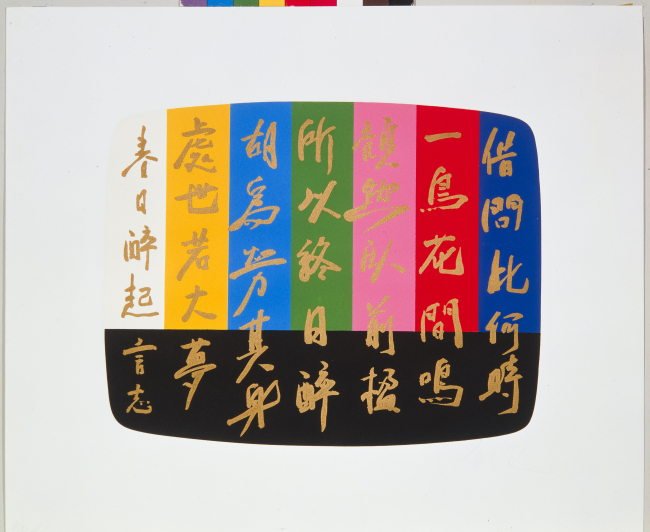Exhibition showcases more than 80 print works from National Museum of Modern and Contemporary Art, Korea
An extensive collection of Korean print works that date from the 1950s to present is on view in Manila as part of Korea’s cultural promotional event taking place throughout Southeast Asia.
The art exhibition, “Fifty Years of Korean Contemporary Printmaking,” showcases about 80 prints that illustrate both the artistic heritage and development of Korean printmaking spanning some 50 years at the Metropolitan Museum of Manila.
“I am hopeful that the exhibition of ‘Fifty Years of Korean Contemporary Printmaking’ will provide an opportunity to introduce diverse perspectives on Korean contemporary art and culture to the Philippine audience, which will create a dialogue between the two countries,” said Forentina Colayco, director of the Metropolitan Museum of Manila.
 “Lee Taebaeck Captivated in Color” by Nam June Paik. ( MMCA)
“Lee Taebaeck Captivated in Color” by Nam June Paik. ( MMCA)
 “Cook Mind Flat 1, 2, 3” by Kang Ai-ran. (MMCA)
“Cook Mind Flat 1, 2, 3” by Kang Ai-ran. (MMCA)
The exhibition starts with the early stage of printmaking from the 1950s, a period when artists relied on traditional methods but also saw the rapid development of techniques and forms thanks to artists who studied in the U.S.
First-generation artists include Yoo Kang-youl, who was the first to participate in an international exhibition and established an association of printmakers in 1968. His 1950s work “Untitled (A Fish in the Mountain)” features traditional Korean motifs in black and white.
The 1960s was a time when print works became popular among young artists because they were able to reproduce multiple works. Han Yong-jin’s woodblock print “Work-62” was among them, which follows the style of Art Informel, the Western style of abstractionism.
During the ’70s and ’80s, Korea saw advancement in printmaking with the arrival of various techniques from overseas. Nam June Paik, who incorporated various media such as video and music in his works, also used print to express his artistic ideas. In 1984 Paik created the copper plate print work “Lee Taebaeck Captivated in Color,” using the television test screen pattern and calligraphy of a poem from the Chinese Tang dynasty. Lee Taebaeck is the Korean rendition of Tang poet Li Bai’s name.
Korea’s grassroots art movement called Minjung Art used printmaking as a means for communication with the public in resisting the authoritarian government’s crackdown of pro-democracy activists in the 1980s. Woodblock printmaking was a popular medium for artists and activists in delivering social messages to the general public.
Hwang Jai-hyoung’s 1984 “Coal Miner” is printed on a wage-payment receipt, an attempt to combine art with life through the use of everyday objects.
The use of the personal computer in 1990s made available printing methods other than the conventional ink and paper printmaking. Artists began to produce automated prints using computers; others incorporated photography and other media and expand it into installation art.
Kang Ai-ran posts aluminum casting onto a screen surface, exploring the traditional aluminum plate in printmaking. Instead of etching and engraving on the aluminum plate, the casting creates the image of Korean “bottari,” or a cloth-wrapped bundle, in his 1999 “Cool Mind Flat 1, 2, 3.”
The “Korea Festival in ASEAN” continues through Aug. 23 in six Southeast Asian countries, including Singapore, the Philippines, Vietnam and Thailand. Other cultural programs include performances, film screenings and special forums on Korea-ASEAN relations.
By Lee Woo-young
http://www.koreaherald.com/view.php?ud=20130730000867